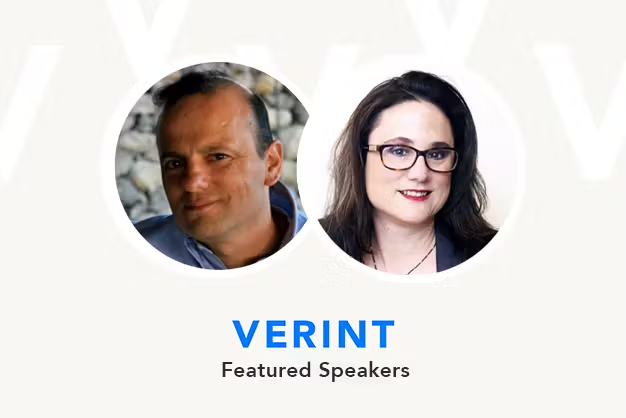
What Back-Office Managers Can Learn from Hockey


When you hear someone yell “Woo!” in my house that means hockey season is here, and the Boston Bruins just scored.
Hockey is fast-paced and chaotic, requiring a good game plan and intense focus while on the ice. You need to be able to maneuver quickly, make decisions quickly, and be precise.
Like a hockey coach, back-office managers also deal with chaos. Work comes from multiple disparate and disconnected sources, like CRM, BPM, case management, email, external reports, and processing systems. Employees may work in different locations. The work itself is complex and variable.
A winning back office is efficient and effective. Leading organizations are leveraging purpose-built, Back-Office Workforce Management solutions to overlay the chaos and create a single source of truth for operational intelligence, managing productivity and allocating work.
Creating a Game Plan—A Capacity Plan
A hockey coach gathers a host of data before making his game plan. He analyzes the environment the game will take place in, studies the opposing team’s past performance, looks at strengths and weaknesses, and does the same for his own team.
Roles in hockey have multiple layers aligned to specific tasks. For example, a defenseman can perform one of two roles. There are those who stay back and focus on blocking shots and clearing the zone; and then there are offensive defensemen who support the forwards and engage in scoring opportunities.
The coach uses these insights and knowledge of his players to create a strategy.
The back-office manager also creates a game plan—a capacity plan—using Back-Office Workforce Management solutions that automatically analyze historical work demand to forecast future work volumes, hours to complete, and FTE required for each task.
The manager must understand how the tasks align to each role, which employees can perform what tasks, and their level of proficiency. The capacity plan will identify the number of resources needed, and if you have enough skilled employees to meet demand.
Leveraging the Right Team Player at the Right Time
The coach and manager work with their players to execute and adapt to swiftly changing conditions. In hockey, the puck moves at a rapid pace across the ice. The players work to move the puck to the right player with the right skills to score the goal.
The other team is disrupting that effort, and it’s unpredictable. The disrupters could include being down a player(s) due to a penalty, injury, or unsportsmanlike conduct.

(Left: The author, Nicole Nevulis, enjoying a Boston Bruins hockey game.)
While a puck isn’t flying everywhere in the back-office, the work sure is. Think of it in terms of thousands of pucks. A back-office leader must orchestrate the work to people (even bots) with the right skill to complete the work correctly and on time. They must account for the unique needs of each task, end-to-end process goals, and the availability of people on the team.
Back-office managers deal with unplanned disruptions too. Higher volumes than expected, team members absent or leave early due to illness, or unexpected attrition creating understaffing.
Unlike hockey, it’s not just three twenty-minute periods with a break between each one and it’s done. It’s all day long, five to seven days per week, maybe across multiple shifts. Work carries over from one day to the next, creating a backlog or inventory of work.
Introducing the Work Allocation Bot
Imagine if the hockey coach had an AI bot that could analyze what’s happening in real time and calculate for him the best place to position a player, with the right skills, to execute a clutch play. That’s what Verint’s new Work Allocation Bot, part of our Verint Operations Manager™ solution, can do for back-office managers.
Using complex algorithms and business rules, the Work Allocation Bot prioritizes the work, allocates the work to the employee best skilled to execute it, and continually rebalances the workload across teams to ensure your processing service goals are met.
Employees are no longer bored waiting for work, nor are they frustrated and stressed by being assigned work for which they aren’t trained or proficient.
| Work Allocation Bot Key Capabilities | |
| Robust Prioritization Rules Engine | Prioritizes the work based on multiple parameters, levels and combinations: Task level, end-to-end process level, differentiating criteria (example: value, product, region, and 3rd party), age Replaces a first-in-first-out workflow with a highest priority first approach |
| Employee Capability | Analyzes the skills and proficiency of employees. Ensures highly paid employees get high-value work vs. low-value |
| Employee Availability | Analyzes availability, including time scheduled in non-production-related work (e.g., meetings, training, etc.). Looks at the amount of time before a break or end of day and does not assign work that takes longer to complete than an employee has time for. |
| Adapt to Changing Conditions | Balances workloads across teams. Continuously reprioritizes and rebalances work according to the schedule you set (e.g., new work that has arrived with a higher-level priority than the backlog gets allocated first). Takes lower-priority work out of employee task list. |
Empowering the Coach—Your Managers
The Work Allocation Bot frees up your managers from the time-consuming, manual effort of prioritizing and allocating work, enabling them to engage in value-added activities, like coaching.
A hockey coach knows sometimes a player may not be productive, and lack focus, and they correct this with real-time coaching. During breaks, the coach brings the team together to talk about how they are doing and the adjustments the team will make. Post game, they analyze the footage and share the insights with the players to further develop their skills.
Back-office managers try to do the same—but with employees often in different locations or working remote, it can be tough. Automation saves the day again, eliminating blind spots by automatically providing operational intelligence to manage productivity and coach team members to level up their performance.
Verint Operations Manager provides managers with real-time insight into how employees are spending their time, if they are focused and productive, or if they are struggling. Keeping employees engaged and performing at their best helps ensure the work is completed on time, and correctly, the first time.
A Back-Office WFM Success Story
Capita, a UK Business Process Outsourcer, had a client who was struggling with complex, lengthy processes that were causing low customer satisfaction scores (a -11 NPS!).
With Verint Operations Manager, Capita was able to transform their end-to-end customer processes and automate the prioritization and allocation of work to dramatically improve turnaround times and reduce customer complaints.
In the case of the client with low NPS, they were able to reduce turnaround times by 91%, from 35 days to less than 3 days—and increase the NPS from -11 to 79 points!
Want to learn more about Verint Back Office Workforce Management solutions, including Verint Operations Manager and our Work Allocation Bot? Visit www.verint.com/backoffice.

